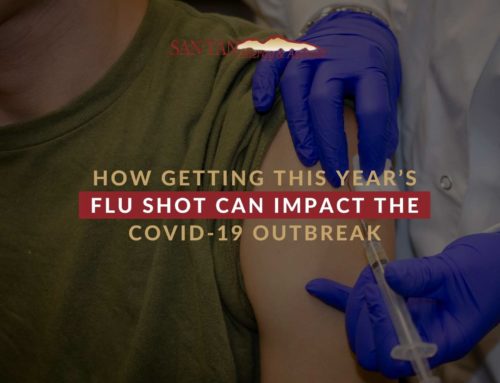Prepared by Amanda Hess, MMS, PA-C
We see a lot of patients and worried parents coming into our office to re-examine their child’s food allergies, before starting Pre-K or Kindergarten, or even an older child starting at a new school. Starting school can be a very stressful time for food allergy parents. I’m often asked by parents, “How do we prepare for starting school for our child with food allergy?” Below, I review some tips for dealing with this stressful issue and promoting a safe and fun learning environment, despite your child’s food allergies:

1. Emergency Action Plan. Take summer as an opportunity to meet with your allergist about your child’s food allergies, to update emergency action or food allergy action plans, complete any updated testing or discuss food challenges if warranted, and to renew epinephrine auto-injector devices. As a reminder, two doses of epinephrine should be available at all times (i.e. the 2-pack), as 10-20% of severe food allergy reactions require a second dose of epinephrine.
If your child’s school requires paperwork to be completed by your allergist, then try to obtain this before the school year starts so it can be completed ahead of time. Following up regularly with your allergist allows us the opportunity to reassess your food allergies if needed and update emergency action plans.
An emergency action plan should be part of a student’s individual health plan (IHP), which is a complete management plan for your child. This is a complete management plan involving effort from your allergist, school nurse, family, and other school personnel, including food services, playground/recess staff, and bus drivers. Some states use general guidelines that schools must follow, including Arizona. As your child grows older, the IHP should be updated regularly.
2. Know your child’s school policies. Some schools already have policies in place to accommodate food-allergic individuals. Some schools are already nut-free, for example, or have food-allergic kids in similar grades eat at a nut-free table. However, several children will have other allergies such as milk, wheat, or gluten. Some schools have cafeteria aides who know to monitor food-allergic kids closely. Other schools have “no sharing food or utensils” rules that they enforce. Also, some schools make students wash their hands before and after lunch to prevent cross-contact. It is important to know how your child’s school operates and hopefully some of these precautions are already in place.
3. Meet with your child’s teacher. Summer is a great time to set up a meeting with your child’s teacher. He/she will likely be the adult having the most contact with your child. Take this time to discuss your child’s food allergies, their emergency action plan, signs and symptoms of anaphylaxis, and any other concerns you may have. It should be stressed to teachers that even minute or trace amount of certain foods can be life-threatening when ingested. Some schools have some type of food allergy training for teachers and staff, so your child’s teacher may be well prepared already to deal with any emergencies.
4. Classroom accommodations. While meeting with your child’s teacher, consider discussing additional precautions for the classroom. Studies show that most food reactions in school actually occur outside of the cafeteria. In addition to general school policies about food allergy, having some general guidelines in place in the classroom can help with eliminating possible exposures. This usually applies to younger children, however can be considered for older children as well. Options include:
-No food used for class projects.
– No home-made treats in the classroom. Even well-meaning parents can accidentally include an ingredient in a home-made treat, unaware of the possible cross-contamination or allergic risk. Treats should be store-bought and contain a label that lists all ingredients.
– Any “goody bags” given out to other classmates during birthdays, Halloween, Christmas, or Valentine’s Day should contain non-food items such as pencils, pads, stickers, etc. or be on a pre-approved list. Given information in advance, most parents will be happy to buy a safer snack alternative to accommodate your child.
-Food allergic children could have a “goody box” with alternative treats, maintained by parents. For celebrations or birthdays, have a goody box or safe snack box for your child to choose from, so they have a fun surprise to join the celebration.
After discussing with your child’s teacher and possibly reaching an agreement, see if you and the teacher can draft up a letter together explaining that there is a child/children in the classroom with food allergy and to try to adhere to these extra precautions. Consider sending this letter home with other classmates for parents to review during the first week of school.
5. Meet with the school nurse. I also recommend meeting with the school nurse, perhaps at the same time you are meeting with your child’s teacher. Your child’s teacher and the school nurse are the major players in your child’s support team.
The school nurse can help partner with your child’s teacher to help implement classroom rules and policies. They can also assist by working with your child’s allergist, making sure your epinephrine auto-injectors and emergency action plans are up to date, and educating everyone involved in your child’s education regarding food allergy and classroom/school rules.
The school nurse can also help educate staff on signs and symptoms of anaphylaxis and how and when to use epinephrine auto-injectors.

6. Educate your child. Depending on your child’s age, developmental and maturity level, and risk of exposure, he/she may not need any additional precautions in place. Pre-school age and young elementary students of course need more oversight and precautions, however older students may not. It is worth noting however, that adolescents are more likely to engage in risk-taking behavior and studies have shown that up to 45% of teenagers with food allergy have knowingly ingested a food allergen. Because of this, it is important to never stop being diligent and educating your child with food allergy.
It is important to educate your child as best as possible as they are the best advocate for their own safety. If you feel your child is able to, many schools will allow children to self-carry their epinephrine auto-injectors. Also, be sure you practice with auto-injector trainers regularly; Be sure you and your child know how to use the auto-injector in an emergency.
7. Consider a 504 plan. Some families consider a 504 plan, which protects the legal rights of children with life-threatening food allergies, and consider children with a diagnosis of food allergy to meet the definition of a “disability.” Section 504 provides a legal remedy when students, families, and schools cannot come to agreement on specific terms. I find that 504 plans can be helpful but usually are not necessary, because most schools are willing to accommodate students. Also, federal regulations require schools to provide students with appropriate substitutions for children who participate in free/reduced meal programs.
These tips are not meant to be an exhaustive list, but instead serve to try to help parents initiate these difficult conversations with starting the new school year and/or at a new school. With some of these precautions in place and early discussions, there can be less anxiety for students, parents, teachers, staff and administration at school. With education and implementation of classroom and school policies, students with food allergy can have an optimal opportunity to have a healthy and safe learning environment.
If you would like to learn more:
– FARE website (Food Allergy Research and Education) and CDC Guidelines
– American Academy of Allergy, Asthma and Immunology Position Statement on Anaphylaxis in Schools
– Management of Food Allergy in the School Setting
– Arizona State Guidelines for school management of food allergies







